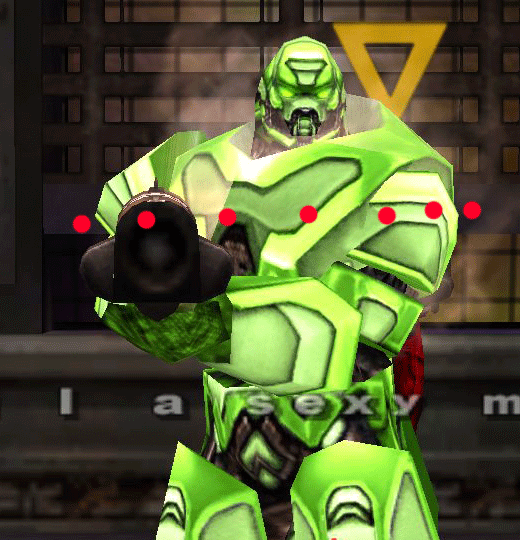I've been thinking about dropped counts in mouse movement that can be caused by having a too low of a dpi or a different windows pointer speed and wondered how it can actually be a benefit to aiming. Here is what i found out. For anyone having trouble understanding what counts are they are basically just pixels for your mouse movements. Less counts means bigger pixels but that doesn't mean you have bigger shots, it just means the mouse will be centered around the pixel and skip the empty areas of it.
1. Dropped counts can make aiming easier
Have you ever noticed high sensitivity users often have terrible long range lg (tracking aim)? Is it because they don't have enough counts (pixels) to aim at? No, at least not most of the time. The real issue comes from the fact that they aren't very good at controlling their mouse long range. This is why lower counts (to a reasonable amount) is a good idea because it makes it is easier to control our aim. I made an info graphic to explain this below -
Count 1 (low counts, same sensitivity) -
The distance from the left end of the model to the right is 4cm. Now imagine you slightly over aim to the left of the model. Does this make you miss? No, because you still haven't moved your mouse further enough to move onto the next count.
Count 2 (high counts, same sensitivity) -
The distance from the left end of the model to the right is also 4cm. Now imagine again you slightly over aim to the left of the model. Does this make you miss? Yes, because you have a higher amount of counts this will make you move onto the next count quicker.
Disadvantages and why this is a good idea
Humans aren't perfect. It makes sense to sacrifice a little bit of precision for better mouse control. This doesn't mean we want as little counts as possible otherwise the gaps in the counts will become so big we will literally be skipping over the enemy model causing a choppy like mouse effect. We want to find a fine line between the two so that we can get the best of both worlds.
Dropped counts in competitive gaming
To quote Lorfa - "This kind of thing was actually really common in the early days of q3, where players would have a 400 dpi ball mouse, but use driver settings to throw out every other count or so, rendering it effectively 200 DPI. This doesn't feel quite the same as if you had the DPI itself. Fatal1ty also did this with the razer boomslang 1000 dpi, which is one of the reasons why you see the sens and accel in his old configs how it was."
Another interesting tidbit is that one of the best railgun (sniper) player in Quake "K1llsen" continues to use this method. Because of it's aiming style of nature it is also the weapon the would most benefit from such a method as the railgun relies more on being consistent than it is to be precise compared to the other weapons.
What's next?
The problem with past methods such as using the driver or windows pointer speed is that these methods rely on a higher form of latency for mouse movement over newer technology such as raw input which has a very low latency for mouse movement. This may be the reason why this practice is no longer common in the competitive gaming scene. But it doesn't have to be this way. If game companies started offering this option through their game client we would be able to get the best of both worlds of low input and better mouse control.
1. Dropped counts can make aiming easier
Have you ever noticed high sensitivity users often have terrible long range lg (tracking aim)? Is it because they don't have enough counts (pixels) to aim at? No, at least not most of the time. The real issue comes from the fact that they aren't very good at controlling their mouse long range. This is why lower counts (to a reasonable amount) is a good idea because it makes it is easier to control our aim. I made an info graphic to explain this below -
Count 1 (low counts, same sensitivity) -

The distance from the left end of the model to the right is 4cm. Now imagine you slightly over aim to the left of the model. Does this make you miss? No, because you still haven't moved your mouse further enough to move onto the next count.
Count 2 (high counts, same sensitivity) -

The distance from the left end of the model to the right is also 4cm. Now imagine again you slightly over aim to the left of the model. Does this make you miss? Yes, because you have a higher amount of counts this will make you move onto the next count quicker.
Disadvantages and why this is a good idea
Humans aren't perfect. It makes sense to sacrifice a little bit of precision for better mouse control. This doesn't mean we want as little counts as possible otherwise the gaps in the counts will become so big we will literally be skipping over the enemy model causing a choppy like mouse effect. We want to find a fine line between the two so that we can get the best of both worlds.
Dropped counts in competitive gaming
To quote Lorfa - "This kind of thing was actually really common in the early days of q3, where players would have a 400 dpi ball mouse, but use driver settings to throw out every other count or so, rendering it effectively 200 DPI. This doesn't feel quite the same as if you had the DPI itself. Fatal1ty also did this with the razer boomslang 1000 dpi, which is one of the reasons why you see the sens and accel in his old configs how it was."
Another interesting tidbit is that one of the best railgun (sniper) player in Quake "K1llsen" continues to use this method. Because of it's aiming style of nature it is also the weapon the would most benefit from such a method as the railgun relies more on being consistent than it is to be precise compared to the other weapons.
What's next?
The problem with past methods such as using the driver or windows pointer speed is that these methods rely on a higher form of latency for mouse movement over newer technology such as raw input which has a very low latency for mouse movement. This may be the reason why this practice is no longer common in the competitive gaming scene. But it doesn't have to be this way. If game companies started offering this option through their game client we would be able to get the best of both worlds of low input and better mouse control.
Edited by twohands at 17:36 CDT, 1 October 2015 - 22167 Hits


